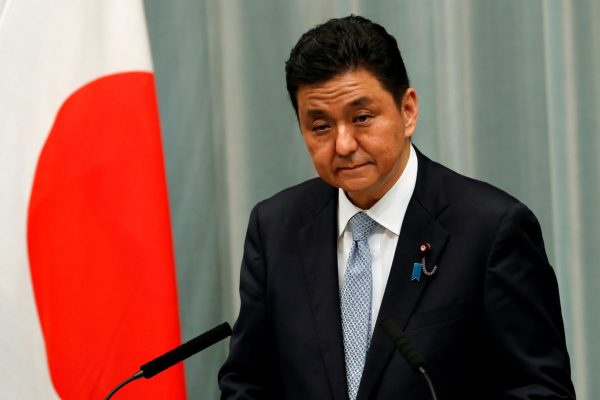It is envisaged that such action will involve the SDF providing protection for Australia’s military assets during joint training exercises and peacetime surveillance activities in waters near Japan, which would logically include the East China Sea. It will be up to the Japanese defence minister to accede to a request from the Australian military for such protection.
Although announced without much fanfare, Kishi’s policy initiative is a major step for Japan. It will bring Australia formally under Japan’s collective self-defence umbrella in addition to Japan’s alliance partner, the United States.
New security laws permitting the SDF to undertake such action were implemented in March 2016. At the time, they were widely seen as a historic change in Japan’s post-war defence posture. Despite widespread criticism and public protest, they were pushed through the Japanese Diet by the then prime minister Shinzo Abe who was bent on bolstering Japan’s military contribution to the US alliance, changing the Japanese peace constitution by reinterpreting it and preparing the ground for formal constitutional amendment.
The current initiative similarly typifies the kind of incrementalism that has characterised the process whereby Japan has expanded its military roles and functions in the region, and internationally, without formally revising its peace constitution.
What does this current development signify about the direction of the Australia–Japan defence relationship?
First, it confirms the official Japanese claim that the special strategic partnership between the two countries is ‘going from strength to strength’, and Japan now regards Australia as ‘second only to … [its] formal ally the United States in terms of its strategic importance to … [Japan]’. The strong alignment of Japanese and Australian strategic objectives was apparent in Australia’s July 2020 Defence Strategic Update and in the rapid pace of developments affirming the direction for the defence relationship laid out in the Update which followed.
Second, Japan’s willingness to provide military protection for Australia’s defence assets in sea areas close to Japan will support increasingly frequent exercises between the defence forces of the two countries. It follows logically from the 2017 Acquisition and Cross Servicing Agreement (ACSA) and joint naval exercises, and will complement the Japan–Australia Reciprocal Access Agreement (RAA), which will reportedly be concluded in Prime Minister Morrison’s visit to Japan in mid-November. The RAA will cover the practical arrangements required for the Australian Defence Force (ADF) to operate in and around Japan and for the SDF to do the same in and around Australia.
Prime ministers Morrison and Suga are also expected to agree to implement the agreement for the SDF to provide protection of Australian military vessels. Given the location where these vessels will be operating, however, it is Japan that will be the primary beneficiary. This latest change in Japanese defence policy will thus directly enhance Japanese security. It may also facilitate Japan’s joining the so-called ‘Five Eyes’ intelligence network, which former Japanese defence minister Taro Kono has twice proposed, and which would build on the 2016 Trilateral Information Sharing Agreement.
Third, the step is yet another in what Michael Bosack calls ‘a new era in Japanese security practice’, whereby Japan welcomes other middle powers to its shores independently of its sole alliance partner — the United States — and which is ‘representative of a more proactive Japan that is institutionalizing middle power security relationships as part of its “Free and Open Indo-Pacific” strategy’.
Promoted by Abe as a free and open Indo-Pacific (FOIP) ‘vision’, the FOIP was the most important feature of foreign policy under his administration. Suga has stressed that Japan will continue to promote the initiative, as was clear during his recent visit to Vietnam and Indonesia. The FOIP amounts to a China-balancing strategy designed to facilitate closer military and security cooperation with so-called ‘quasi-allies’, such as Australia and India, and to establish common ground with ASEAN’s Indo-Pacific policy, while also framing US policy in the region.
A possible vehicle for the practical implementation of the FOIP will be the Quadrilateral Security Dialogue (Quad) in which Australia participates with the United States, Japan and India, recently condemned by China as an ‘Indo-Pacific version of NATO’. There may also be potential for other countries to join the Quad, such as Vietnam, with Suga’s recent visit to that country described as ‘building an anti-China coalition’. Certainly in appointing Kishi — a well-known China hawk with pro-Taiwan sympathies — as defence minister, Suga has guaranteed that Japan will continue to provide impetus for the Quad to act as a possible vehicle for creating a unified anti-China front in the Indo-Pacific based on FOIP principles.
Aurelia George Mulgan is Professor at the School of Humanities and Social Sciences, the University of New South Wales, Canberra.

